
Today we will be driving to Karakorum (also called Kharkhorin). Karakorum was the capital of Genghis Khan’s Mongolian Empire in the thirteenth century. In 1220, Genghis Khan ordered the building of Karakorum on the ruins of Turug and Uigur cities in the Orkhon valley at the eastern end of the Khangai Mountains. During the reign of Ugedei Khan, it was completed 15 years later. The town was very multicultural and culturally accepting.
The silver tree, which was once part of Möngke Khan’s palace, has become Karakorum’s emblem.
From 1220 to 1260, it was at its most prosperous. Karakorum existed as the great capital of the Euro-Asian Empire, with Mongolia at its heart, and as the epicenter of politics, trade, culture, faith, intellect, and diplomacy, as well as the most visible link in international relations.
Between 1260 and 1380, Karakorum lost its status as the capital of the Great Mongolian Empire and became Mongolia’s capital. When Kublai Khan and his younger brother, Ariq Boke, assumed the throne of the Mongol Empire in 1260, they moved their capital to what is now Beijing. Karakorum was reduced to the administrative center of a Yuan Dynasty provincial backwater.
After 110 years after Kublai Khan transferred the Empire capital to China in 1260, the Mongolian Yuan Dynasty fell in 1368, and the center of Mongolian government was shifted to its homeland. It allowed Karakorum to regain its former glory.
The town was captured and destroyed by Ming troops under General Xu Da in 1388. Nothing remains of this legendary city today.
When Abtai Sain Khan and his brother, Lord Tumenkhen, went to the 3rd Dalai Lama in 1580 to express their desire to create a temple in Mongolia, he advised them to restore an old temple in Karakorum. The Main Zuu temple of Erdene Zuu monastery is a temple in Takhai ruins that was restored in 1588 at the Dalai Lama’s suggestion.
Erdene Zuu Monastery is now all that is left of what was once a massive monastery with 100 temples and over 1.000 lamas. You’ll walk around the grounds of Erdene Zuu Monastery, which is encircled by huge 400 m X 400 m walls. You will be guided around the 3 remaining temples: The Dalai Lama, Zuu of Buddha and Lavrin Temple.
The Karakorum Archaeological Museum will be another stop on your itinerary. It’s a tiny museum, but it’s housed in a new, well-run structure with good lighting and simple English labels on display cases. The displays contain hundreds of artefacts from the 13th and 14th centuries that were discovered in the immediate region, as well as those from other provinces’ archaeological sites, including prehistoric stone tools. Pottery, bronzes, coins, religious sculptures, and stone inscriptions are among the objects on display. A half-excavated kiln is also sunk into the museum floor. The scale model of ancient Karakorum, which attempts to reflect the city as it would have existed in the 1250s and is based on descriptions written by the French missionary William of Rubruck, is perhaps the most intriguing. A Turkic noble tomb with wall paintings and artefacts, including gold objects and jewels, is on display in another chamber. A short video of the actual burial site is available.
You can also visit the Turtle Rock and the Phallic Rock, as well as a small market that showcases local artists’ work.
(Ger camp L, D)
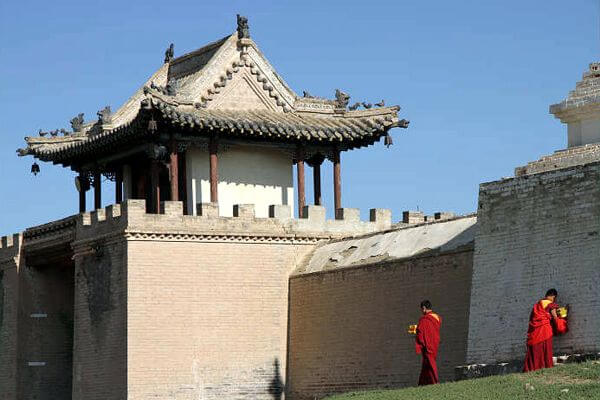
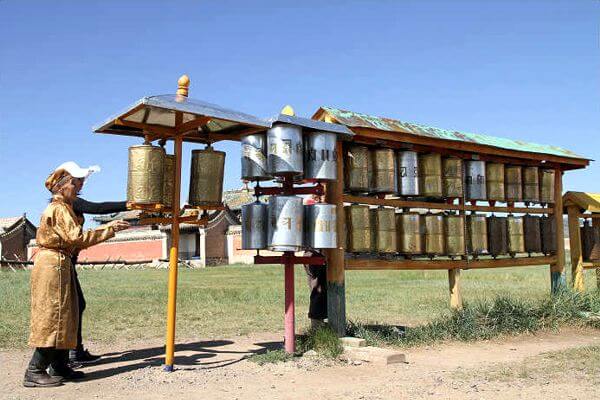
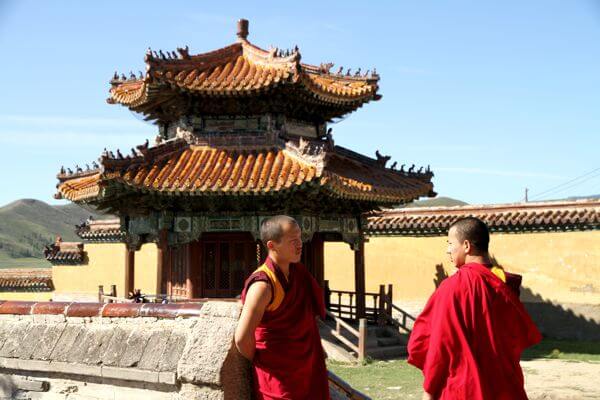

Tsetserleg, the capital of Arkhangai province, will be our first stop. It’s a charming little town nestled among forested hills. We’ll go to the Buyandelgeruulekh Monastery, the town’s main operating monastery, as well as the Arkhangai Museum, which is housed in the Zayaiin Gegeenii Monastery. We’ll walk up the hill from the museum to take in the views of Tsetserleg and the surrounding hills.
We’ll arrive at Terkhiin Tsagaan Lake in the evening. It is one of the country’s most beautiful lakes. The lake was created by lava flows from a millennia-old volcanic eruption and is surrounded by extinct and craterous volcanoes. The landscape is coated with black volcanic rocks as a result of the volcano eruptions.
(Ger camp B, L, D)
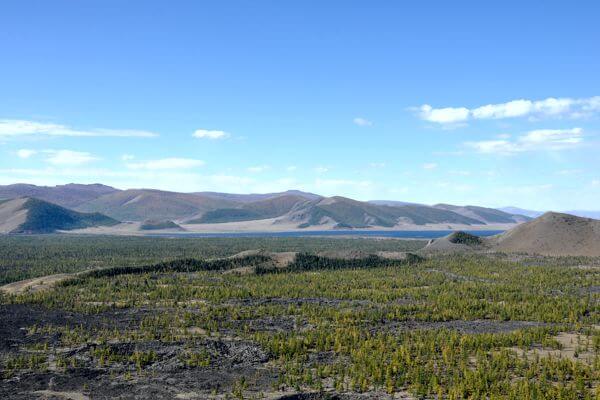

We will go on an excursion to the top of the Khorgo Uul Volcano in the morning. Khorgo Peak, a volcanic field, is about 4 kilometers from the lake. The volcano crater is 200 meters wide and 100 meters deep, and it is surrounded by trees at the back and around the opening. There are numerous basaltic “Gers” formed during the cooling of lava to the south of Khorgo Mountain; some of the Gers have gates and upper holes and exceed 1.7 m in height.
(Ger camp B, L, D)
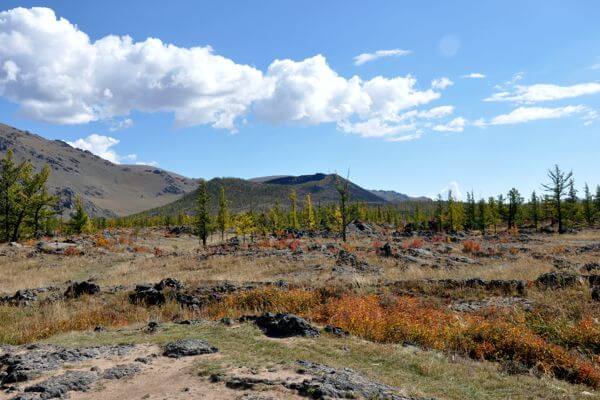

Zavkhan aimag is located in Mongolia’s western region. The western flank of the Khangai Nuruu, Mongolia’s second highest mountain range, forms the eastern edge of Zavkhan aimag, a beautiful region of forests and lakes dotted with snow-capped peaks, white-water streams, and hot and cold springs.
The southern and western parts of Zavkhan, which are mostly overlooked by tourists and Mongolians due to bad roads and transportation, are a stark contrast-vast deserts, salt lakes, and sand dunes with just a few inches of rain each year.
Fun fact: Otgontenger Uul is Mongolia’s 5th highest mountain and the highest peak in the Khangai Nuruu range. Its highest point is 4020 meters above sea level.
Otgontenger is one of Mongolia’s most revered mountains. The first ruling state of Mongolia, the Khunnu, started worshipping during Khunnu times, and this practice continues to this day. Since 1992, the peak and its surroundings have been protected in order to preserve the high mountain ecosystem.
We’ll be driving all day to get to Kholboo Nuur Lake at the end of the day. We’ll pass through small towns like Nomreg, Tudevtey, and Santmargats today. We’ll spend the night near Bayannuur village, near Kholboo Lake.
(Tented Camp B, L, D)
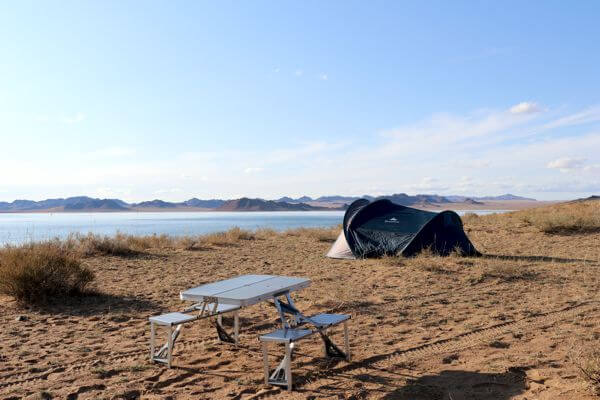
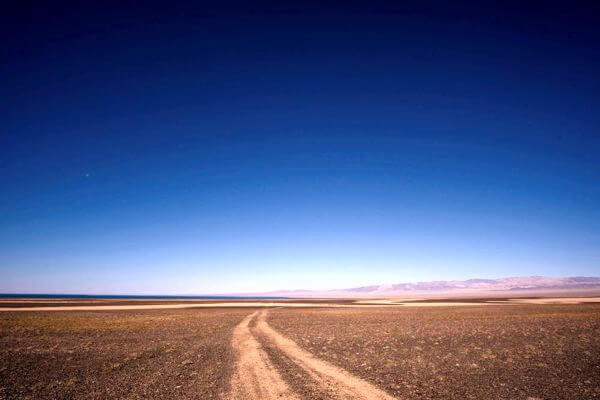


Our trek will begin at the Bayannuur River, which is not far from the village where we will camp for the night.
(Tented Camp B, L, D)
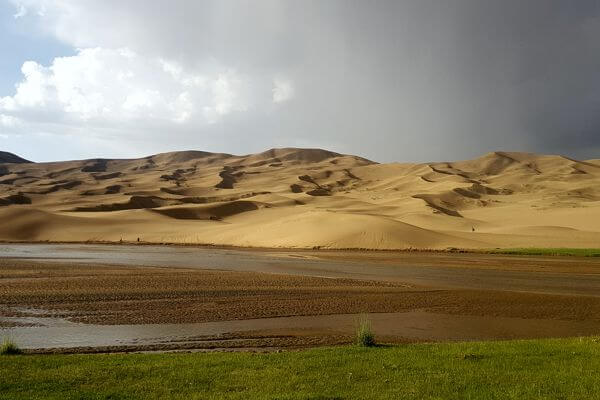

We’ll arrive at Bayannuur Lake today and trek for two days along the lake. The salt lake, nestled among the Bor Hyariin Els sand dunes, is a lovely spot with fascinating scenery.
(Tented Camp B, L, D)
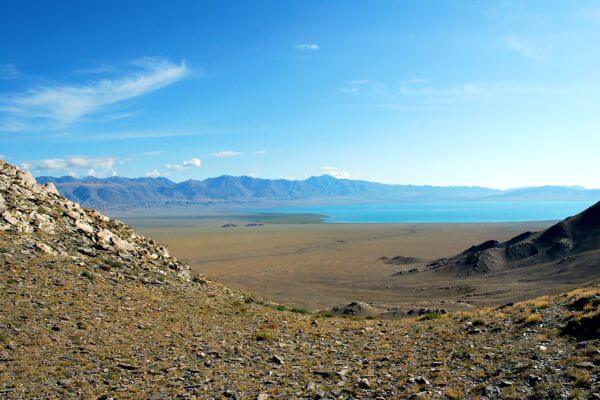

We’ll trek to our sand dune crossing pass after leaving Bayannuur Lake behind. We’ll set up camp near the sand dunes and prepare for the big crossing.
(Tented Camp B, L, D)
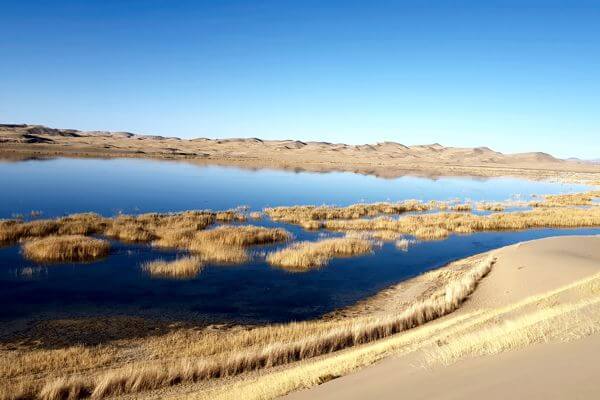

We’ll go on a hike through the Bor Khyariin Else Sand Dunes today. We’ll cross this 15-kilometer-wide sand dune and finish the day by following a small river that runs south of the dune. Between the sand dunes and the Khungiin River, we’ll set up camp for the night.
(Tented Camp B, L, D)
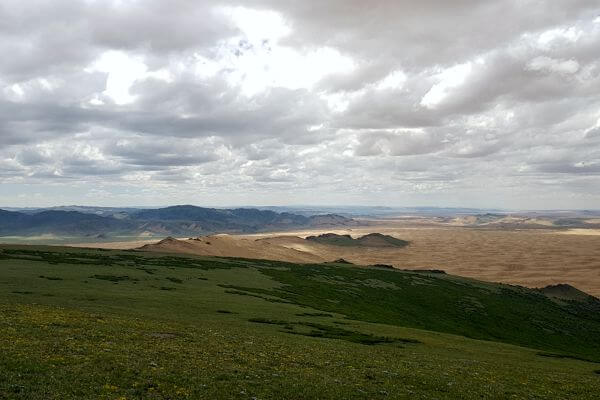


We’ll be trekking upstream along the Khungiin River for the next two days.
(Tented Camp B, L, D)
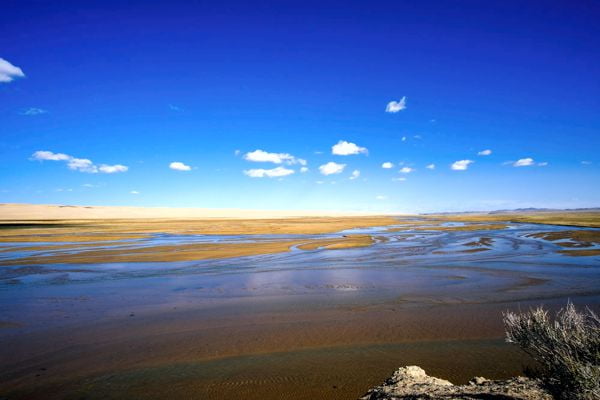

We’ll return to Uliastai town today. Uliastai is surrounded by mountains on all sides and is one of the country’s most remote aimag. The town is quiet and pleasant. Take advantage of your free afternoon to explore this tiny community.
(Hotel B, D)
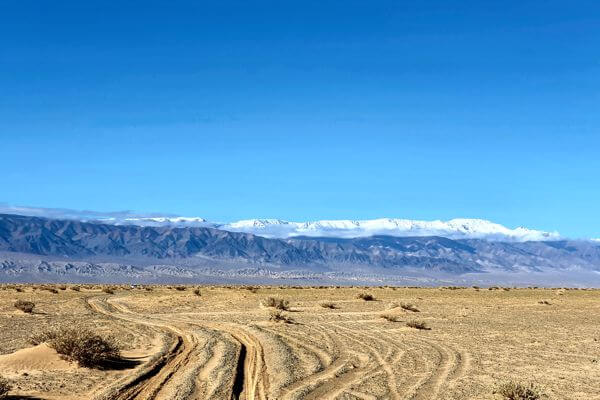

The time has come to leave and fly back to Ulaanbaatar, Mongolia’s capital. You can use your free afternoon to see as you fit. You could always go see the lovely cultural show and admire the contortionists while watching colorful and rhythmic Mongolian dances.
(B, D)
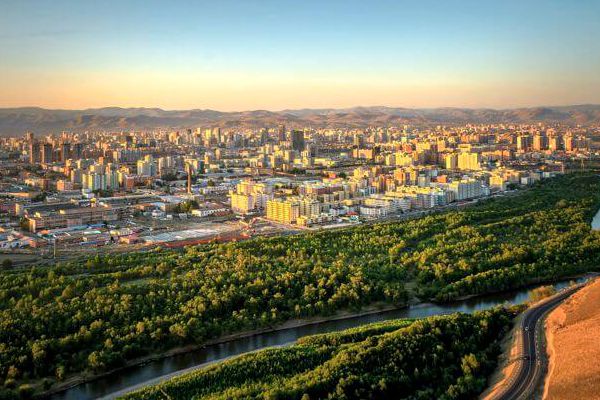
ADDRESS:
